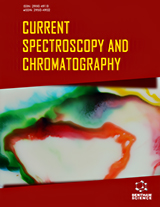Abstract
A simple, rapid, selective and sensitive electrochemical method for the direct determination of prednisolone in spiked human serum and tablets was developed. The electrochemical oxidation and determination of prednisolone has been carried out at glasy carbon electrode (GCE) in various aquaeous solution in the pH range of 0.56-12.30 by cyclic (CV) and Osteryoung square wave voltammetry (OSWV). The best results were obtained for the determination of prednisolone by OSWV method in 0.5 mol L-1 sulphuric acid at about pH 0.56. The peak current and peak potential depends on pH, so its influence and also scan rate were studied. The diffusion controlled by nature of the peak was established. This electroanalytical procedure enabled to determine prednisolone in the concentration range 1.0 x10-6- 2.0x10-5 mol L-1. This limit of detection (LOD) and limit of quantification (LOQ) were obtained as 3.4x10-7 and 4.5x10-7 mol L-1 respectively. Precision and accuracy of the developed method were checked by recovery studies in spiked tablets and human serum.
Keywords: Prednisolone, Voltammetry, Determination, Tablet and Serum
Current Analytical Chemistry
Title: Electrochemical Oxidation of Prednisolone at Glassy Carbon Electrode and Its Quantitative Determination in Human Serum and Tablets by Osteryoung Square Wave Voltammetry
Volume: 3 Issue: 1
Author(s): Selahattin Yilmaz, Slowomira Skrzypek, Yusuf Dilgin, Sultan Yagmur and Mahmut Coskun
Affiliation:
Keywords: Prednisolone, Voltammetry, Determination, Tablet and Serum
Abstract: A simple, rapid, selective and sensitive electrochemical method for the direct determination of prednisolone in spiked human serum and tablets was developed. The electrochemical oxidation and determination of prednisolone has been carried out at glasy carbon electrode (GCE) in various aquaeous solution in the pH range of 0.56-12.30 by cyclic (CV) and Osteryoung square wave voltammetry (OSWV). The best results were obtained for the determination of prednisolone by OSWV method in 0.5 mol L-1 sulphuric acid at about pH 0.56. The peak current and peak potential depends on pH, so its influence and also scan rate were studied. The diffusion controlled by nature of the peak was established. This electroanalytical procedure enabled to determine prednisolone in the concentration range 1.0 x10-6- 2.0x10-5 mol L-1. This limit of detection (LOD) and limit of quantification (LOQ) were obtained as 3.4x10-7 and 4.5x10-7 mol L-1 respectively. Precision and accuracy of the developed method were checked by recovery studies in spiked tablets and human serum.
Export Options
About this article
Cite this article as:
Yilmaz Selahattin, Skrzypek Slowomira, Dilgin Yusuf, Yagmur Sultan and Coskun Mahmut, Electrochemical Oxidation of Prednisolone at Glassy Carbon Electrode and Its Quantitative Determination in Human Serum and Tablets by Osteryoung Square Wave Voltammetry, Current Analytical Chemistry 2007; 3 (1) . https://dx.doi.org/10.2174/157341107779314181
| DOI https://dx.doi.org/10.2174/157341107779314181 |
Print ISSN 1573-4110 |
| Publisher Name Bentham Science Publisher |
Online ISSN 1875-6727 |
 16
16
- Author Guidelines
- Bentham Author Support Services (BASS)
- Graphical Abstracts
- Fabricating and Stating False Information
- Research Misconduct
- Post Publication Discussions and Corrections
- Publishing Ethics and Rectitude
- Increase Visibility of Your Article
- Archiving Policies
- Peer Review Workflow
- Order Your Article Before Print
- Promote Your Article
- Manuscript Transfer Facility
- Editorial Policies
- Allegations from Whistleblowers
- Announcements
Related Articles
-
Physical Means of Stratum Corneum Barrier Manipulation to Enhance Transdermal Drug Delivery
Current Drug Delivery Abundance and Diversity of GI Microbiota Rather than IgG<sub>4</sub> Levels Correlate with Abdominal Inconvenience and Gut Permeability in Consumers Claiming Food Intolerances
Endocrine, Metabolic & Immune Disorders - Drug Targets Recombinant Secretory Immunoglobulin A in Passive Immunotherapy: Linking Immunology and Biotechnology
Current Pharmaceutical Biotechnology Factors Associated with Self-Reported Drug Allergies in a Large Chronic Spontaneous Urticaria Cohort
Current Drug Safety Bioinformatics and Therapeutic Insights on Proteins in Royal Jelly
Current Proteomics Genetics of Interleukin 1 Receptor-Like 1 in Immune and Inflammatory Diseases
Current Genomics Asthma in Childhood – Making the Diagnosis
Current Pediatric Reviews The Role of Chest High Resolution CT and RT-PCR in Diagnosis of Different Stages of Coronavirus (COVID-19) Pneumonia
New Emirates Medical Journal Pneumococcal Infections at Hajj: Current Knowledge Gaps
Infectious Disorders - Drug Targets Effect of Tetracyclines on IgE Allergic Responses and Asthma
Recent Patents on Inflammation & Allergy Drug Discovery Pediatric Eosinophilic Esophagitis: Epidemiology, Diagnosis and Treatment
Current Pediatric Reviews The Clinical Stage of Allergic Rhinitis is Correlated to Inflammation as Detected by Nasal Cytology
Inflammation & Allergy - Drug Targets (Discontinued) Editorial [Hot Topic:Toward Translational Research on VIP AND PACAP (Executive Editor: A. Arimura)]
Current Pharmaceutical Design Treating COPD in Older and Oldest Old Patients
Current Pharmaceutical Design Adrenal Insufficiency Caused by Locally Applied Glucocorticoids-Myth or Fact?
Current Medicinal Chemistry An Update on Drug Interactions with the Herbal Medicine Ginkgo biloba
Current Drug Metabolism Decoding the Inter-Relationship between Sleep Disorders and Alzheimer’s Disease Pathogenesis
CNS & Neurological Disorders - Drug Targets Drug Treatment of Eosinophilic Oesophagitis
Current Drug Metabolism Circulating MicroRNAs as Biomarkers for Inflammatory Diseases
MicroRNA The Clinical Potential of Worms and their Products in Treating Inflammatory Diseases
Current Immunology Reviews (Discontinued)


























